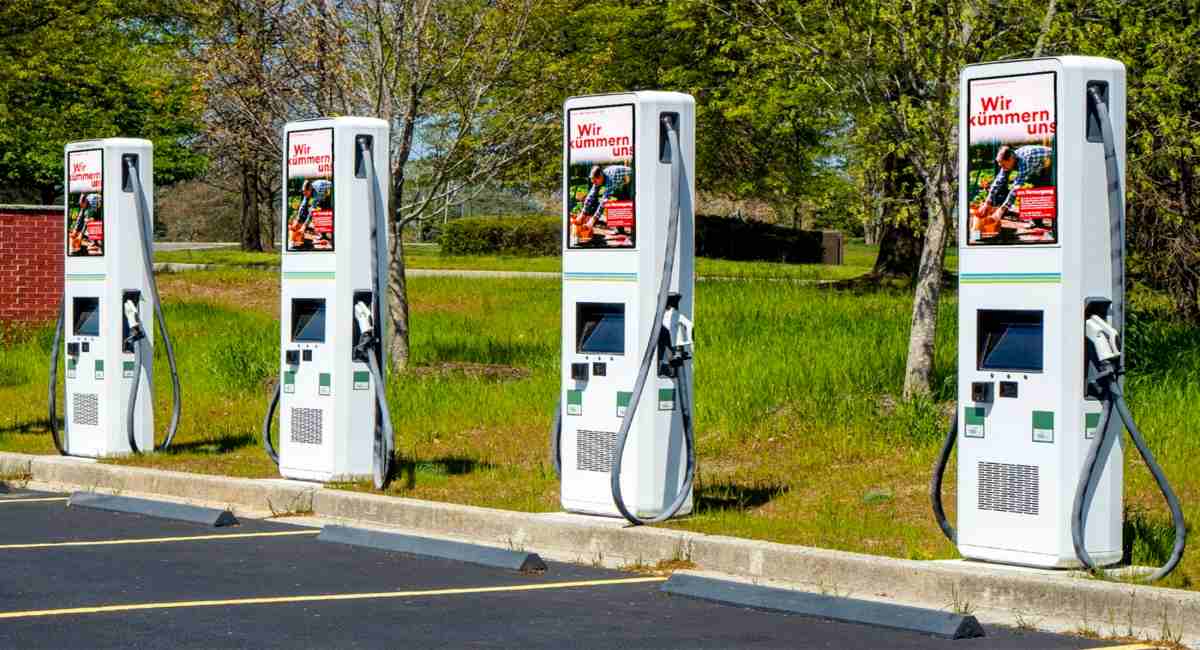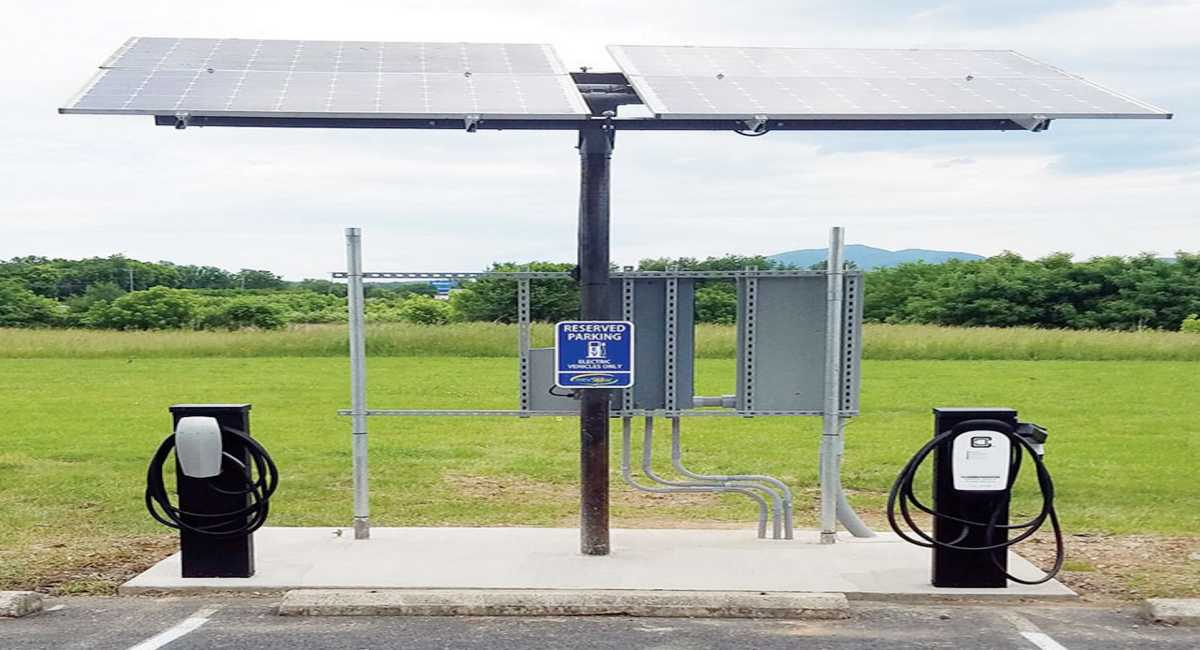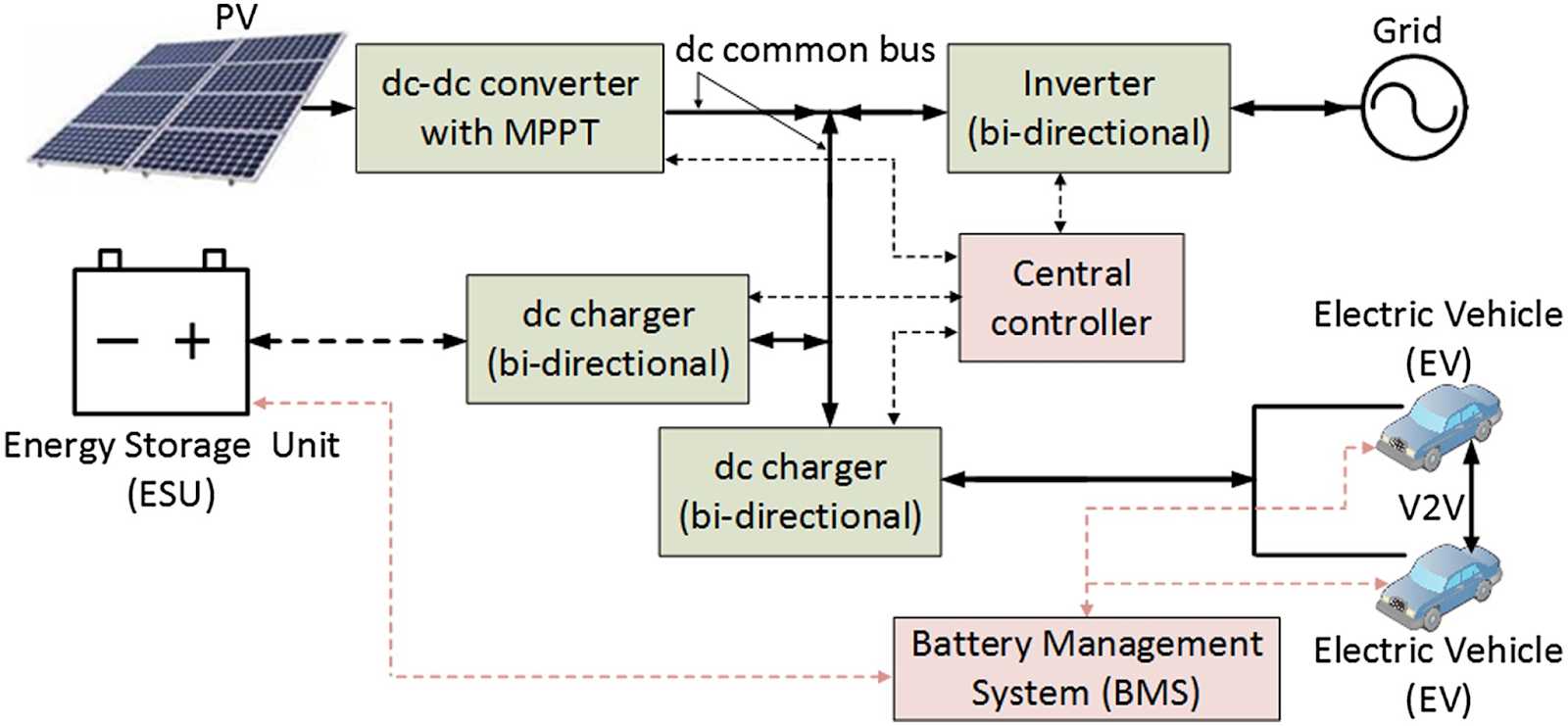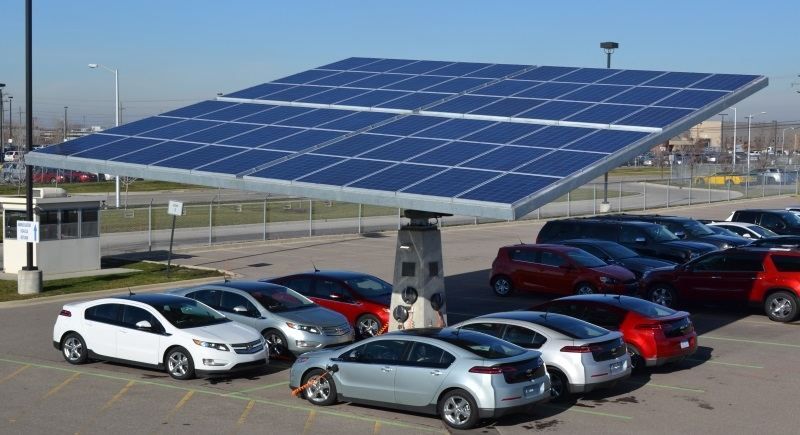Imagining EV Charging Infrastructure With Solar

The nexus of Solar Energy & EVs
The ultimate promise of electric vehicles is a cleaner environment. That cannot be achieved if the strain on the power grid requires additional investment in non-renewable resources to deliver the energy. That's why renewable energy for EV charging is so critical. Using renewable energy to power the EV charging infrastructure eliminates the strain on the grid and the environment simultaneously, especially when combined with smart EV charging.
The batteries from electric vehicles can be used to charge the campus or home via two-way charging, thus reducing the requirement for non-renewable-based power from the grid. When consumers combine renewable energy with bidirectional EV charging to power their homes, they perceive extra benefits. They may not have to pay for the initial electricity (if they use rooftop solar panels), and they may not have to purchase as much from the utility when the solar panels aren't in use.

Reaping the benefits
Solar energy combined with efficient energy management cuts GHG emissions dramatically, resulting in a cleaner environment. It also has the potential to be highly profitable.
Compared to fossil fuel cars, electric vehicles (EVs) emit significantly less greenhouse gas emissions, which can be reduced to zero if green power is used to charge them. As a result, by incorporating renewable energy into an EV fleet infrastructure, businesses and towns may cut pollution and their entire carbon footprint by reducing greenhouse gas emissions from both vehicles and power plants.
Smart EV charging improves control over the charging process by allocating electricity across charging sites, campus needs, and individual charge points within a charging station. Energy needs may be provided regularly with smart EV charging without putting undue strain on the campus or station. EV smart charging also saves the utility money on infrastructure by removing the need to expand capacity. Furthermore, smart EV charging makes it easy to alter prices based on high demand times, incentivizing people to charge their vehicles during off-peak hours.
The more renewable energy is used, the fewer charge points rely on the grid. Solar panels built on the charging station's premises, for example, can be used to charge the batteries, allowing EVs to be charged without adding to the grid's load. During peak demand, the energy stored in the batteries can help relieve pressure on the electrical system.
Due to a paradigm shift in the global energy generation environment, access to green electricity is also becoming a reality. On a worldwide scale, many developments and investments are taking place in this field, particularly in the solar power generation sector.
Of late, harnessing the abundantly accessible solar energy and using it as a power source for Electric Vehicles has become a requirement rather than a choice for tackling pollution-related concerns. One of the most potent use-cases, in this context, is 'Solar Powered' Electric Vehicle Charging Stations.
The Types and Costs of EV Car Chargers
There are three sorts of electric vehicle chargers, and the type we choose will determine the cost:-
(i)Private EV Charger:- We can charge your electric vehicle's battery by plugging it into a private EV charging station. These can be grid-tied or connected to a solar panel system. It's an excellent home charging station alternative if one has an electric car but no solar panels.
(ii)Integrated Private EV Charger:- An integrated private charger is similar. Still, it can only be used with a solar system with the proper solar inverter brand and size.
(iii)Public EV Charger:- A public charger is the third alternative. These are designed for commercial usage and allow their owners to charge users a fee for using them. They're also the costliest option and necessitate regular software updates. These updates are linked to an app that shows where electric vehicle charging stations are available and which ones are already occupied.
How Many Solar Panels Does It Take to Charge an Electric Car?
Electricity, like gas, is expensive. While we could connect our EV charger to the grid and pay for electricity to charge our car, we could reduce our carbon emissions by instead using renewable energy. If we have a solar system or are thinking about getting one to power our EV charger, we may not need as many solar panels as we believe.
To charge our electric automobile, we anticipate that between eight and fourteen solar panels will be required. This is dependent on how frequently we travel, our vehicle's efficiency, the amount of sunlight in our area, and the sort of panels we have installed. Before incentives, a system of this scale would likely cost $20,000 to $25,000 to install.
Embedded Electronics Enabling the Usage of Solar PV System for EV Charging
Today's solar panel charging installations for electric vehicles can be divided into two categories: Mobile solar charging systems, which include rooftop solar panels used to charge the batteries of an electric vehicle; and Stationary solar charging systems, which is a ground-based (grid or off-grid) installation that includes direct charging installations/devices available at EV charging stations.
Let's have a look at the significant components of a solar-powered electric vehicle charging system:-
(i)Solar PV panels:- A photovoltaic (PV) panel converts solar energy into electricity, which is then sent into the electric vehicle batteries. Large arrays (300) of electrically connected solar panels would be put in fast EV charging stations to generate the requisite power to charge electric cars in a day. One of the most critical aspects in determining the output efficiency of solar panels is the angle of the panels. The latitude, longitude, and meteorological conditions are the other factors. The solar panels are coupled to solar trackers that are motorized and moveable. These motor-driven trackers change the solar panel's axis based on microcontroller inputs to receive the most sunlight at any time of day.
(ii)Microcontrollers: A typical solar PV charging system is responsible for ensuring maximum solar power generating efficiency via MPPT controllers. It also aids in the storage of excess energy generated by solar PV panels in storage battery cells.
(iii)In addition, the microcontrollers are programmed to position the panels for optimal power generation by employing a Pulse Width Modulation (PWM) approach to control the motor.
(iv)Solar Panel Axis Rotation control motor:- The solar trackers are controlled by a bi-directional motor, which tilts the panels at an angle that allows them to receive the most sunlight at any particular time of day. The Sun Position Algorithm provides real-time information regarding maximum solar radiation.
(v)DC-DC converter with MPPT:- The high power provided by solar panels is converted to the required EV battery voltage using an electrical DC-DC converter. These DC-DC converters use maximum Power Point Tracking (MPPT) to allow the PV panels to operate at their full potential. Solar radiation's maximum power is fundamentally non-uniform, varying with temperature and time of day.

(vi)Communication Interface between the EV battery systems and charging system:- To achieve optimal charging without fail, the electric vehicle's battery monitoring system (BMS) should connect with the solar-powered charging system. Most EV charging stations include a Human-Machine Interface (HMI) that displays various parameters such as solar energy capture and the energy utilized by the EV battery while it is charging. To improve the user experience, the number of display options on the HMI may vary depending on the manufacturer.
(vi)The Society of Automotive Engineers (SAE) has established three charging standards for electric car assessing equipment: Level 1, Level 2, and Level 3, with the 'levels' indicating the charging power.
- Level I Charging: A regular domestic power outlet with a 120 V circuit is used to charge a level 1 device.
- Level II Charging: This is a 240 volt AC charging system typically used for daily commutes.
- Level III-DC Fast Charging: A level III charging device uses a high-voltage DC charger (480 V plug) to charge an electric vehicle up to 500 volts.
Solar Energy and EV: Steps taken by Governments and Automotive Companies
Many government agencies, automobile manufacturers, and other industry stakeholders have come forward in recent years to explore the new potential presented by combining solar and electric vehicle charging. They hope to work together to promote the use of EVS and solar PV panels and find a long-term solution to the world's rapidly depleting fossil fuel supply.
Challenges Ahead
An expanded infrastructure is required. It's all about consumer demand and free-market economics. Car firms prefer to use the same factories and robots to mass-produce the same vehicle models rather than manufacturing separate cars for different markets.
Automobile manufacturers must produce for the worldwide market to remain commercially successful. Europe, for example, has committed to becoming all-electric within the next 20 years. Even the most adamant consumers will be forced to join at the end, which will be easier once they compute the statistics and see the results. Politicians that are stuck in the past might stifle development. They are, however, powerless to prevent free-market forces from operating.
Automobile manufacturers are bringing an increasing number of electric vehicles to market, forcing the charging infrastructure to develop. However, that network has a long way to go, necessitating quick, scalable, clean, and cost-effective solutions. Off-grid, solar-powered stations are on the horizon, thanks to this dynamic.

Concluding Thoughts
Both the EV and solar industries have experienced exponential growth in recent years, according to global trends. At the same time, there are obstacles in solar-powered electric vehicle charging becoming a common alternative. Governments, policymakers, and auto-manufacturers are exploring the feasibility of addressing them.
Thus, the combination of solar energy with electric vehicles is mutually beneficial, as each can open up new growth opportunities for the other. While simultaneously making a substantial contribution to decreasing the environmental footprint. Furthermore, the PV-EV synergy will likely open up new economic prospects across the value chain while maintaining the clean energy commitment.

